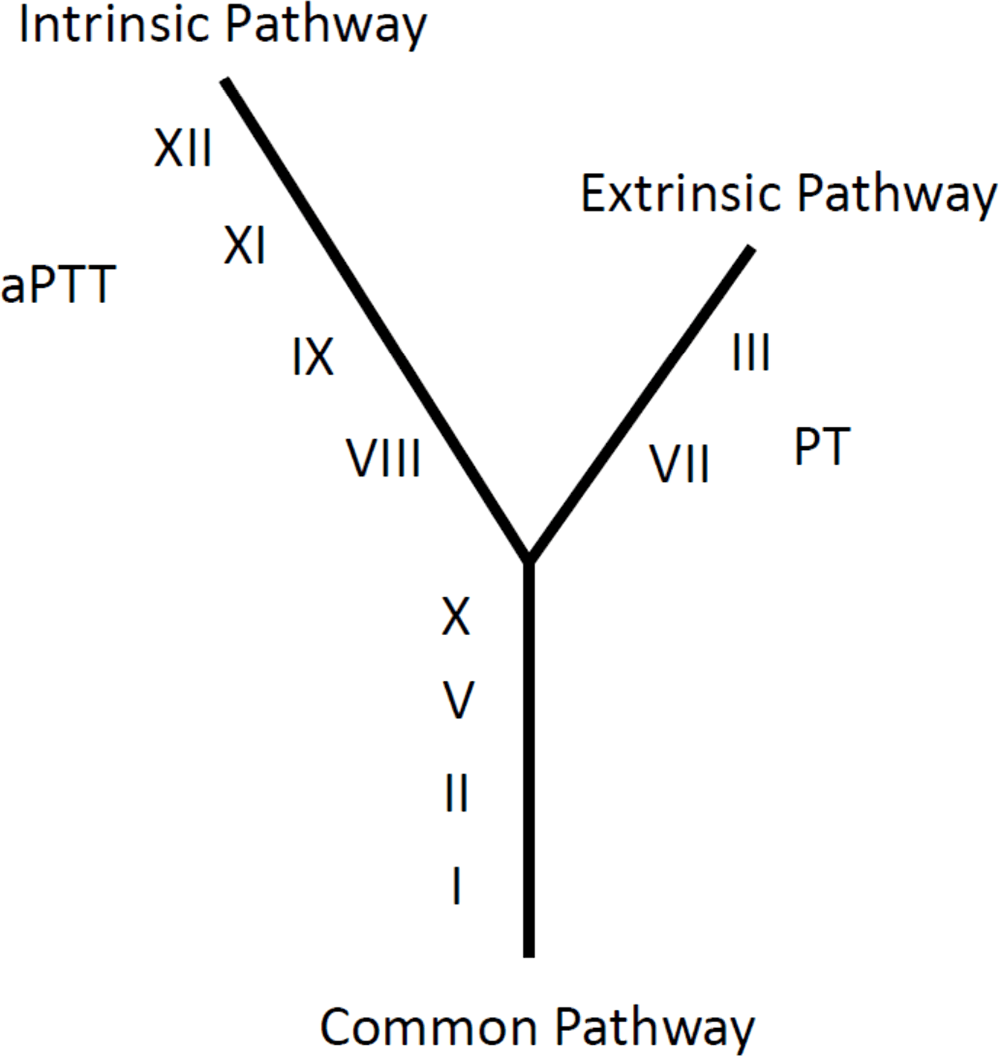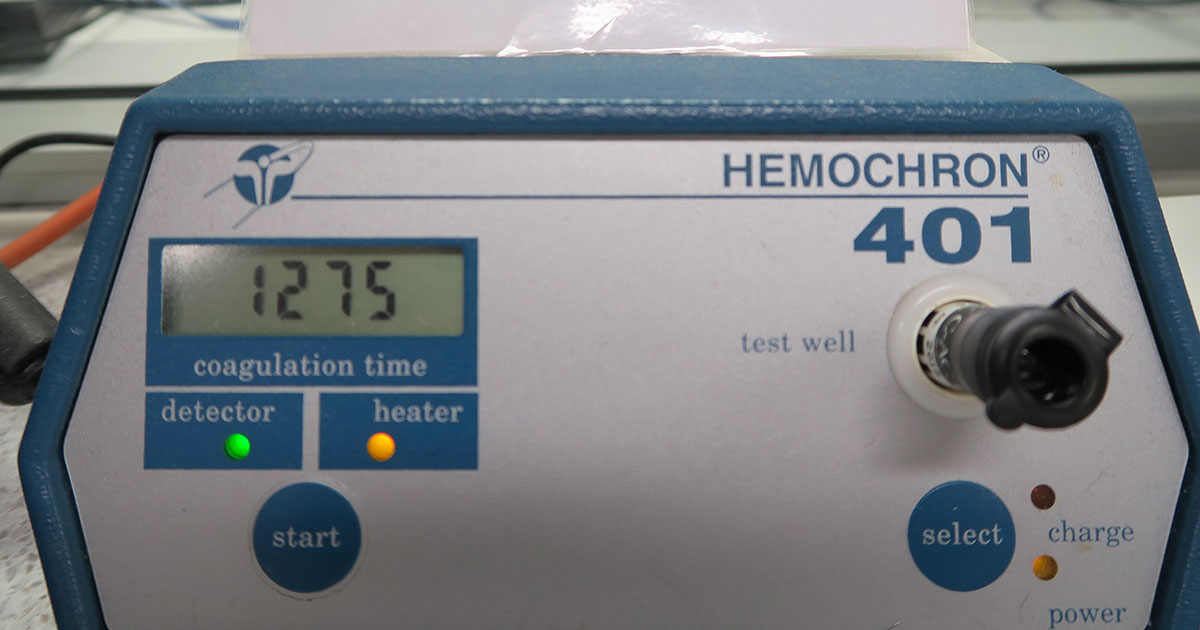Parts one, two and three in this coagulation series have gone over history, physical exam, signalment, and primary and secondary coagulation.
In this part, we are going to delve deeper into secondary coagulation, and look at the coagulation cascade and the specific testing we can do. We are going to answer:
- What is the coagulation cascade?
- What is a prothrombin time (PT) and activated partial thromboplastin time (aPTT) and how do they compare to activated clotting time (ACT)?
The coagulation cascade
We are going through the coagulation cascade using helpful tips that make it easier to remember – they were shared to me from one of our Vet Vault Clinical Podcasts on coagulation.
It is helpful to consider the coagulation cascade as a Y shape so you can remember the different factors.
The coagulation cascade consists of an intrinsic pathway, extrinsic pathway and common pathway:

Intrinsic pathway
- Left arm is LONGER, so is assessed by the longer name – aPTT.
- Four coagulation factors in the left: 12, 11, 9, 8.
- One way of remembering this: £11.98 – rounded up to £12.

Extrinsic pathway
- The right arm is SHORTER, so is assessed by the shorter name – PT.
- Started by factor 3 as it is in every cell in the body.
- Then followed by factor 7.

Common pathway
- Four factors – 1, 2, 5 and 10.
- Bottom factor is number 1 (fibrin).
- The next one up is factor 2 (thrombin).
- This is followed by factor 5.
- Finally, 5 × 2 = factor 10 at the top.

Why is it important to know this?
It helps to understand how ACT, aPTT and PT are related, as it can help diagnose specific clotting factor deficiencies.
Both ACT and aPTT test the intrinsic and common pathways:
- ACT will only detect if lower than 5% normal factor activity.
- aPTT is more sensitive and will detect lower than 30% normal factor activity.
PT tests the extrinsic and common pathways.

So, if the PT is normal and aPTT is prolonged, you are dealing with an intrinsic factor deficiency – in other words, factors 12, 11, 9 and/or 8. This will likely be caused by a hereditary coagulopathy – for example,g haemophilia.
If the PT is abnormal and aPTT is normal, you are dealing with an extrinsic factor deficiency – the most common being factor 7. This is most commonly caused by early rodenticide intoxication, as factor 7 has the shortest half-life.

Leave a Reply